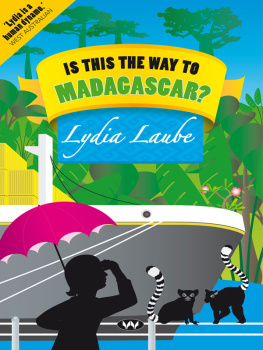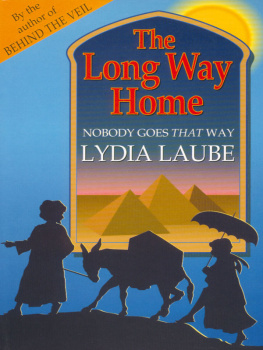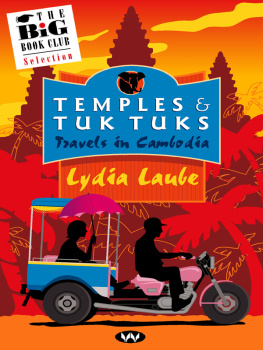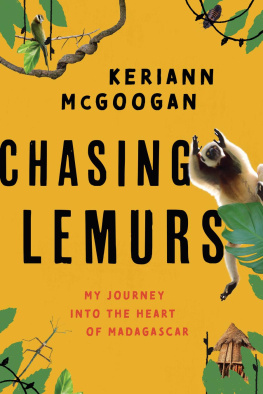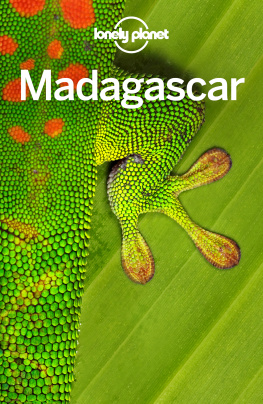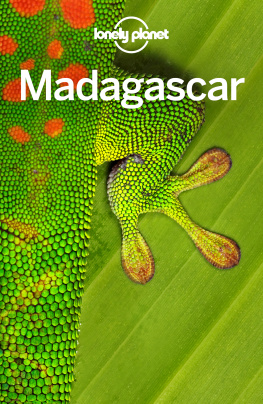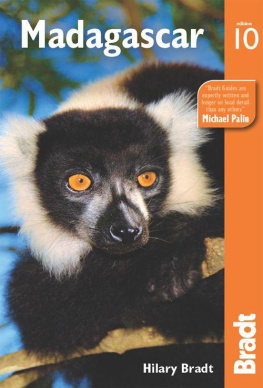Wakefield Press
Is This the Way to Madagascar?
Born into the farming community of Caltowie in the mid-north of South Australia, Lydia Laube gained her nursing qualifications at the Royal Adelaide and Calvary Hospitals in Adelaide and then set off to see the world. She worked in Darwin, Papua New Guinea, Hong Kong, London, Italy, Indonesia and, finally, Saudi Arabia, the experience which led her to write her first bestseller, Behind the Veil. Lydias story of her travels in Madagascar, Is This the Way to Madagascar? , is her seventh book.

LYDIA LAUBE

Wakefield Press
1 The Parade West
Kent Town
South Australia 5067
Australia
www.wakefieldpress.com.au
First published 2007
This edition published 2010
Copyright Lydia Laube, 2007
All rights reserved. This book is copyright. Apart from any fair dealing for
the purposes of private study, research, criticism or review, as permitted under
the Copyright Act, no part may be reproduced without written permission.
Enquiries should be addressed to the publisher.
Edited by Kathy Sharrad
Cover designed by Nick Stewart
National Library of Australia
Cataloguing-in-publication entry
Laube, Lydia, 1948 .
Is this the way to Madagascar?.
ISBN 9781862549043.
1. Laube, Lydia, 1948 Travel Madagascar.
2. Madagascar Description and travel. I. Title.
916.91

To the memory of Minnie Buchanan,
part of my life for more than forty years.
Contents
By the same author
Behind the Veil
Bound for Vietnam
Llama for Lunch
Slow Boat to Mongolia
Temples and Tuk Tuks
The Long Way Home
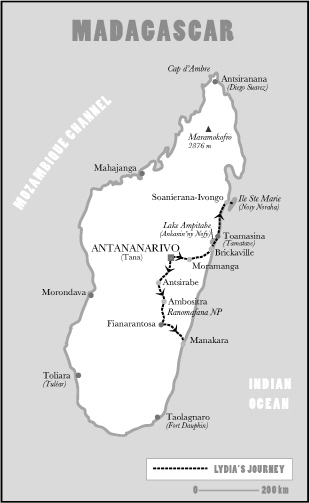
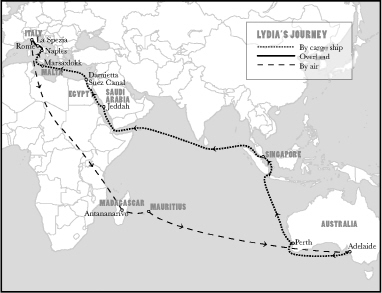
Scouting up and down the steel security barrier like Bugs Bunny trying to outwit the rabbit-proof fence, I eventually located the Manet. A large container ship, I recognised her by the red, white and blue colours of the French flag on her funnel.
At last I was about to sail from Adelaide.
I have one word of advice for all those folk who say that they would like to travel by cargo ship. Persistence! This is not a simple task. At every step of the way you will be told that it cant be done. It can. But not easily.
I started this marathon mission by phoning the shipping agents listed in the yellow pages. They all denied that any passage on a ship out of Adelaide was possible. Next I went to the internet. In London I found a travel agent offering freighter voyages. He told me I should contact an office in Sydney. The first person I spoke to there said his firm didnt do it. I asked to be put through to someone else. This individual said he had never heard of cargo ships picking up passengers in Australian ports. I persisted and was passed from floor to floor, person to person, until the fifth person I spoke to, a woman, said, Oh yes, we do that!
However, after several calls back and forth with her, no ship was found going where or when I wanted. I went back to the London agent who said I should try Freighter Travel in New Zealand. Bingo. I had hit the jackpot!
So one afternoon in mid-August I finally boarded my ship destination Madagascar. I would have to travel a devious route to get there. Not by choice, there was no other way. No passenger-carrying cargo ships cross the Indian Ocean in a direct line to Africa, so I had decided to take the Manet to Europe, from where I hoped to obtain passage on one of the freighters that regularly sail down the African coast and across to Madagascar. And disembarking in Italy would give me the chance to make a sentimental journey to Naples, a city I had lived in many years ago. What happened after that I left in the lap of the gods. Somehow I would reach Madagascar.
Despite the difficulty of finding a way through the security fence Outer Harbour has become heavily protected now that the free and easy pre-terrorist days are behind us its guardian was friendly and helpful. He inspected my passport and phoned for transport to deliver me shipside. A conveyance promptly arrived, driven by a young man who apologised for it being a daggy old van. As if I cared.
Beats walking, I said and, my gangplank ascent somewhat hindered by a clunky floral arrangement of daffodils that had been pressed on me when parting from the rellies, I followed the sailor who carried my bag.
Careful, it is the thirteenth, called down a watching seaman as I tripped over the second rung of the ladder.
At least we arent sailing today, I chirped. Then I remembered we were, tonight!
Clutching daffodils, handbag and umbrella, I grumbled to myself, terrific setting sail on the thirteenth should guarantee that Murphy comes along too.
I made it onto the ship, handed over ticket, passport and vaccination certificate, and was taken by the lift a rare find on a working ship like this to be safely installed at last in what was to be my home for the next month.
The porthole of my cabin on E deck, two levels below the bridge, looked out over piles of stacked containers to the sea.
My door was labelled Super Cargo, which mystified me until I discovered that it meant passenger as in excess baggage. I was superfluous to the real business of this ship freight. Left to my own devices, I was half unpacked when a seaman knocked at the door and summoned me to appear before customs.
Despite the fact that she had been dragged out on a Saturday afternoon just to clear me, Ms Customs was cheerful and smiling. Back in my cabin, my next visitor was the steward, Nico, apologising profusely for having been ashore phoning his family in Romania and not onboard to welcome me before. Nico galloped me off on a Grand Tour of the ship. It was, like my cabin, clean and neat, in a spartan sort of way.
Functional rather than plush would be an apt description of the passenger accommodation. But my cabin was large and had everything I needed: a double bed with a wooden rack above it to store my needed-for-the-night goodies, a small fridge, a desk and chair under a porthole, and a wardrobe. The floor was covered with institutional linoleum and the bathroom was identical to that of the German container ship on which I had sailed to South America a huge shower, everything nailed down, and hand rails wherever possible.
From the porthole I watched as containers were loaded rapidly 300 filled with wine from the Barossa Valley were taken aboard in Adelaide. Should we be shipwrecked on a desert island, we were not going to die of thirst, or, for that matter, unhappy.
Dinner at seven oclock was rather disappointing. As this was a French ship, I had entertained great hopes for the cuisine. But the first course was a pile of semi-cooked potato salad and the second was very ordinary spaghetti bolognaise. A camembert cheese that wasnt at room temperature followed. I consoled myself with two glasses of French wine. Vinordinaire, it was not as good as cheap Australian red, but was complimentary so I drank it.
Next page
